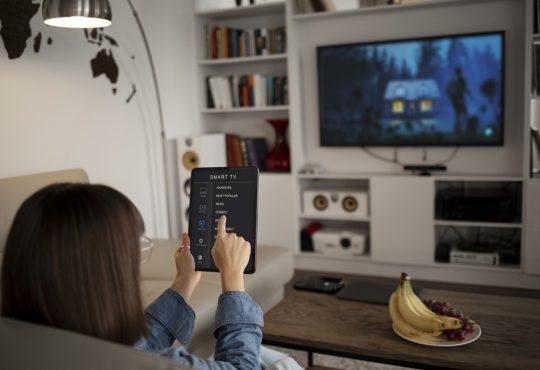The world of smart home technology has transformed how we live, making everyday tasks more convenient, improving security, and even helping reduce energy consumption. However, to truly experience the benefits of a smart home, it’s important to choose the right devices that match your needs. In this article, we will explore a range of smart home devices, from lighting solutions to security systems, that can enhance your living space and make it smarter, more efficient, and more enjoyable.
Assess Your Requirements
Before diving into the world of smart home gadgets, it’s essential to take a step back and assess your specific needs. Do you want to improve convenience by automating daily tasks, enhancing your home’s security with advanced monitoring systems, or reducing your energy consumption with smart thermostats and lighting solutions?
The first step in upgrading your home with smart devices is to consider how each area of your home can benefit. For example, if security is your top priority, smart security cameras and locks might be your best starting point. If energy efficiency is important, focus on smart thermostats and lighting. A thorough assessment of your needs will help you prioritize which devices will provide the most value for your lifestyle. You should also consider the layout of your home, the devices’ compatibility with your current system, and whether you prefer voice control, app control, or a combination of both.
Smart Lighting Solutions
One of the simplest yet most effective ways to upgrade your living space is by integrating smart lighting systems. These systems allow you to control the brightness, color, and even the timing of lights in your home, all from your smartphone or through voice commands. Smart lighting can create an ambiance that enhances your home’s aesthetics, making it easy to set the mood for various activities—whether it’s a cozy movie night, a dinner party, or a focused work session.
Smart lighting systems are customizable, and you can easily adjust brightness levels and colors to match the time of day, activity, or even personal preferences. They can be scheduled to turn on or off automatically, saving energy by ensuring that lights aren’t left on when they’re not needed. Some systems even offer the option to simulate your presence when you’re away, improving home security.
Philips Hue and LIFX are two of the most popular smart lighting brands, offering a wide range of bulbs, light strips, and fixtures that can be controlled remotely. With a simple voice command to Amazon Alexa, Google Assistant, or Apple HomeKit, you can dim the lights or change their color, making your home more dynamic and responsive to your needs.
Climate Control with Smart Thermostats
A major benefit of smart homes is the ability to better manage your energy consumption, and smart thermostats are at the forefront of this trend. Smart thermostats, like the Nest Learning Thermostat or Ecobee SmartThermostat, automatically adjust the temperature of your home based on your habits, reducing energy waste and lowering your utility bills.
These devices can be programmed to learn your schedule, adjusting the temperature when you’re home, away, or sleeping. You can control the thermostat remotely via a smartphone app, ensuring your home is comfortable by the time you return from work or vacation. In addition to learning your schedule, smart thermostats can integrate with other devices in your smart home ecosystem. For instance, they can detect when smart lights or locks are activated, signaling that no one is home and adjusting the temperature to save energy.
Beyond convenience and energy savings, smart thermostats can help maintain the perfect temperature for different zones in your home. If certain areas tend to be cooler or warmer than others, these devices can work in tandem with smart vents to distribute air more efficiently. Over time, the data collected by these devices can help you optimize your heating and cooling, resulting in both comfort and cost savings.
Advanced Home Security
If security is your top concern, upgrading your home with smart security devices can give you peace of mind. Smart cameras, video doorbells, motion sensors, and alarms are designed to help you monitor your home remotely, keep your property safe, and alert you to any suspicious activity. Smart security systems not only deter criminals but also give you real-time access to what’s happening inside and outside your home.
Smart security cameras, like those from Ring, Arlo, or Google Nest, offer high-definition video feeds, two-way communication, and motion detection. These cameras can be placed both indoors and outdoors and are often integrated with other devices like video doorbells, which allow you to see who’s at your front door even when you’re not home. Many smart cameras also come with cloud storage, allowing you to review footage even after an incident has occurred.
Motion sensors and alarms can detect movement in specific areas and send alerts directly to your phone. These can be placed near windows, doors, or other entry points, providing extra layers of protection. For additional security, some systems integrate with professional monitoring services, which notify authorities in case of an emergency, such as a break-in or fire.
Keyless Entry with Smart Locks
Gone are the days of fumbling with keys at your doorstep. Smart locks offer keyless entry and enhanced security by allowing you to control access to your home from anywhere. These locks can be operated via smartphone apps, keypads, or even voice commands, giving you multiple ways to unlock your door.
With brands like August, Schlage, and Yale, smart locks can be easily installed on most doors, and they offer features like temporary access codes for guests, delivery workers, or cleaners. You can set up alerts that notify you when someone enters or leaves your home, providing additional security and peace of mind.
For families, smart locks can make life more convenient by eliminating the need for physical keys. You can unlock the door remotely if your kids forget their keys, or allow a friend to enter while you’re away. Additionally, you can track entry logs, so you know exactly who has come and gone throughout the day.
Voice-Controlled Smart Speakers
Smart speakers, such as the Amazon Echo, Google Home, and Apple HomePod, have become the cornerstone of modern smart homes. These devices not only play music but also act as virtual assistants, controlling other smart devices, setting reminders, managing schedules, and answering queries—all through simple voice commands.
With voice control, you can operate your entire smart home ecosystem hands-free. Whether you want to dim the lights, lock the doors, or adjust the thermostat, a simple command like “Hey Alexa” or “Hey Google” can get the job done. Smart speakers can also serve as an intercom system, allowing you to communicate with other rooms in your home.
By connecting to various smart home devices, these speakers can create an integrated experience, making it easier to control all aspects of your home from one central hub. As they continue to evolve, smart speakers are becoming increasingly intelligent, capable of understanding natural language and providing more sophisticated interactions.
Smart Hubs for Device Integration
Managing multiple smart devices can become overwhelming, which is where smart hubs come into play. Smart hubs like Samsung SmartThings or Apple HomeKit allow you to centralize control of all your devices into a single platform. This seamless integration makes it easier to manage different brands of devices that may not communicate with one another otherwise.
With a smart hub, you can create automation routines that trigger multiple devices at once. For example, a “good night” routine can simultaneously lock your doors, turn off the lights, lower the thermostat, and activate security cameras. These hubs ensure your smart home runs smoothly and that all devices work together efficiently.
Entertainment Enhancements
If you’re looking to upgrade your home’s entertainment experience, smart TVs and streaming devices are great additions. Smart TVs come with built-in apps for streaming services like Netflix, Hulu, and Disney+, while also offering voice control through virtual assistants. With a smart TV, you can access all your favorite shows and movies with just a few voice commands.
Streaming devices like Roku, Amazon Fire Stick, and Google Chromecast can turn any TV into a smart one. These devices allow you to stream content, control playback with your voice and even mirror content from your phone or tablet to your TV screen.
Prepare for Future Technology
As smart home technology continues to evolve, it’s important to future-proof your home by choosing devices that are compatible with future upgrades. Look for smart devices that offer software updates, integration with multiple platforms, and scalability so that you can add new features as they become available.
Investing in versatile devices ensures that your smart home system remains functional as new technologies emerge. Keeping your devices updated with the latest software can also enhance security, functionality, and compatibility with future smart home innovations.
Upgrading your living space with smart home devices can significantly improve your quality of life, whether through convenience, security, or energy efficiency. By assessing your needs and selecting the right combination of smart lighting, thermostats, security systems, locks, and entertainment devices, you can create a home that is not only smarter but also more comfortable and secure. With the right investments, your home can be prepared for the future of technology, offering endless possibilities for customization and control.





